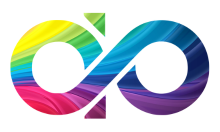In the dynamic world of finance, innovation is the key to staying ahead. One such innovation that is making waves is the integration of Human Re-Enforced AI (HRAI) in trading platforms. This hybrid approach leverages the analytical power of artificial intelligence while incorporating human insight, creating a synergy that enhances investment strategies. Here’s a closer look at how HRAI trading platforms are transforming the landscape of investment.
The Evolution of Trading Platforms
Traditional trading platforms relied heavily on human expertise. Analysts and traders would spend countless hours poring over financial statements, market news, and economic indicators to make informed decisions. With the advent of technology, algorithmic trading emerged, where pre-programmed rules allowed for faster and more efficient trades. However, these algorithms, while powerful, often lacked the nuanced understanding and adaptability that humans bring to the table.
The Emergence of AI in Trading
Artificial intelligence brought a new dimension to trading. AI algorithms can process vast amounts of data at lightning speed, identifying patterns and trends that would be impossible for humans to detect. According to a report by Grand View Research, the AI in the fintech market is expected to grow at a compound annual growth rate (CAGR) of 23.6% from 2021 to 2028. This growth is driven by the need for more efficient trading systems that can handle the complexities of modern financial markets.
The Role of Human Reinforcement
While AI offers remarkable capabilities, it is not without its limitations. AI systems can sometimes be too rigid, failing to adapt to sudden market changes or anomalies. This is where human reinforcement comes into play. Human traders can intervene, providing the contextual understanding and emotional intelligence that AI lacks. By combining AI’s computational power with human intuition, HRAI trading platforms offer a more balanced and effective approach to trading.
Enhancing Investment Strategies
HRAI trading platforms enhance investment strategies in several key ways:
- Improved Decision Making**: By analyzing historical data, market trends, and real-time information, HRAI systems provide traders with actionable insights. Human traders can then use these insights to make informed decisions, reducing the risk of errors.
- Risk Management**: AI algorithms can identify potential risks by analyzing patterns and predicting future market movements. Human traders can then assess these risks, considering factors that AI might overlook, such as geopolitical events or sudden economic shifts.
- Adaptability**: Markets are inherently unpredictable. HRAI platforms can quickly adapt to changing conditions, with AI handling the heavy lifting of data analysis and humans making the final calls based on their experience and judgment.
- Efficiency**: The combination of AI and human intelligence streamlines the trading process, reducing the time needed for analysis and execution. This efficiency is crucial in high-frequency trading, where milliseconds can make a significant difference.
Real-World Examples
Several companies are already leveraging HRAI to revolutionize trading. For instance, Renaissance Technologies, one of the most successful hedge funds, uses a blend of quantitative analysis and human oversight to achieve outstanding returns. Similarly, firms like Bridgewater Associates employ AI to process data and generate investment insights, which are then reviewed and acted upon by human traders.
Data-Driven Success
The success of HRAI trading platforms is backed by data. A study by Deloitte found that firms using AI in their trading strategies saw a 5-10% increase in their annual returns compared to those relying solely on human traders. Additionally, a survey by the CFA Institute revealed that 77% of investment professionals believe that AI and machine learning will have a significant impact on the financial industry within the next five years.
Challenges and Considerations
Despite the advantages, integrating HRAI into trading platforms comes with challenges. Ensuring the accuracy and reliability of AI algorithms is paramount, as is maintaining a balance between automation and human intervention. Moreover, ethical considerations around transparency and accountability must be addressed to build trust in these systems.
The Future of HRAI in Trading
Looking ahead, the future of HRAI in trading appears promising. As AI technology continues to advance, we can expect even more sophisticated algorithms capable of deeper analysis and prediction. Meanwhile, the role of human traders will evolve, focusing more on strategy and oversight rather than routine tasks. This hybrid approach will likely become the norm, offering a powerful tool for investors looking to navigate the complexities of modern financial markets.
Conclusion
Human Re-Enforced AI trading platforms represent a significant leap forward in the world of investment. By combining the strengths of AI and human intelligence, these platforms offer enhanced decision-making, improved risk management, and greater efficiency. As the financial industry continues to evolve, HRAI is poised to play a pivotal role in shaping the future of trading, providing investors with the tools they need to succeed in an increasingly complex and competitive environment.



Leave A Comment